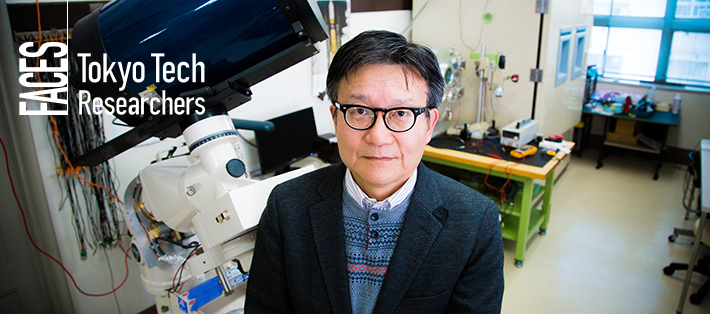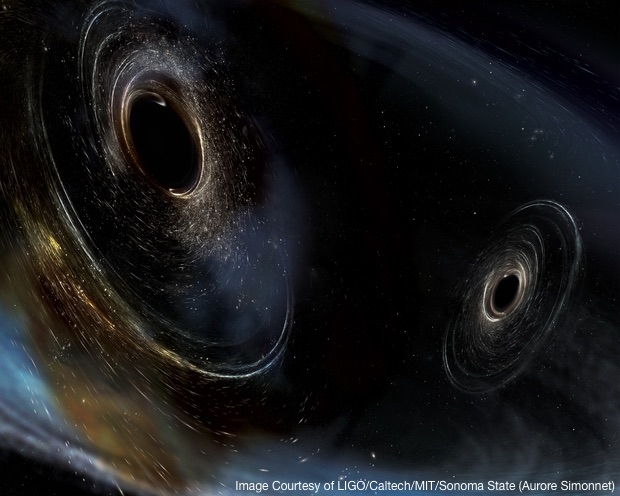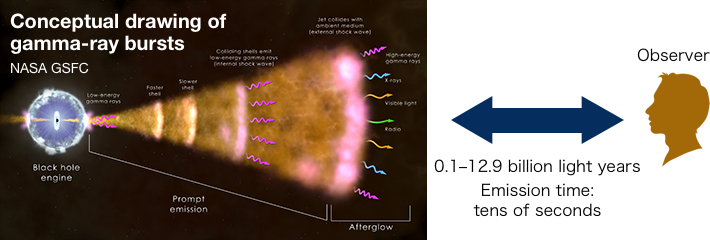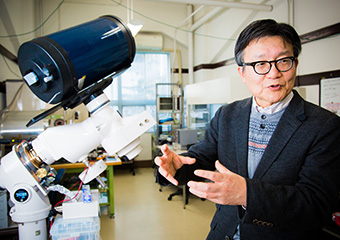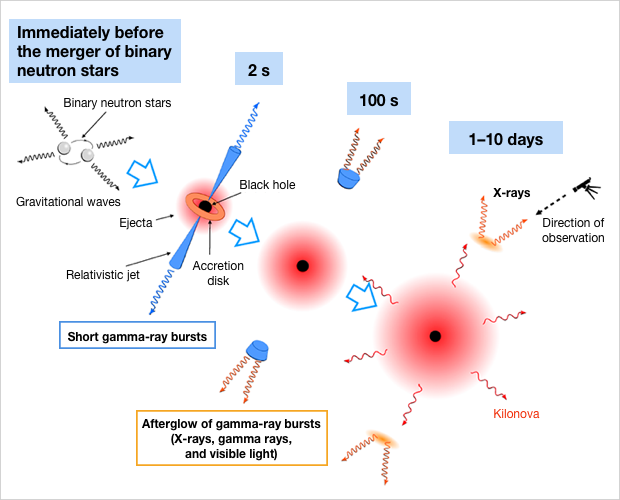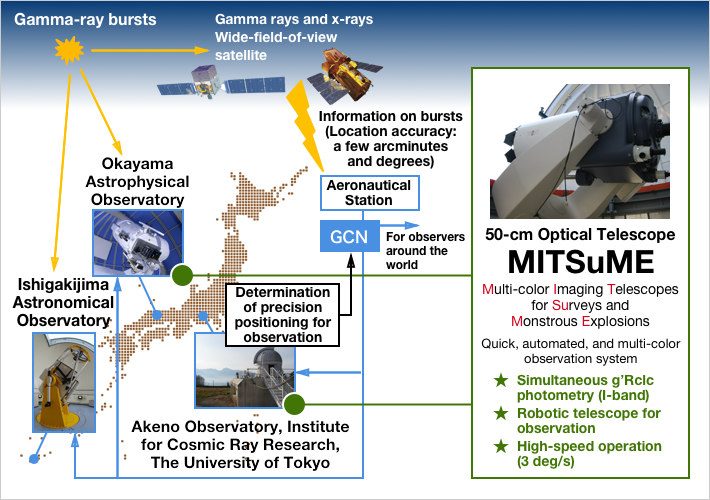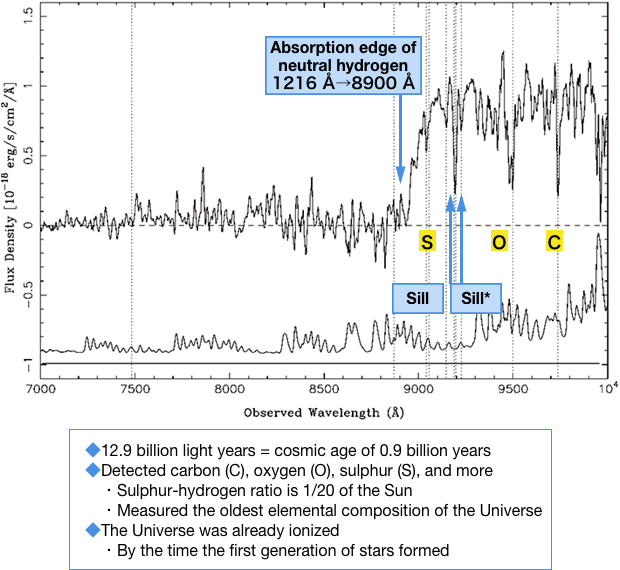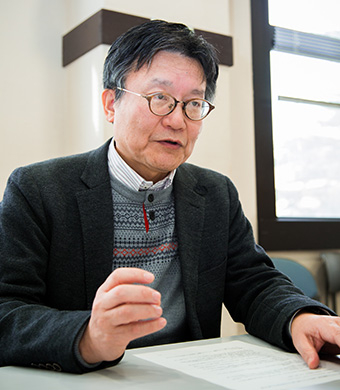
"My research team worked to detect X-rays associated with the gravitational waves utilizing the Monitor of All-sky X-ray Image (MAXI) mounted on the International Space Station's Kibo module. Unfortunately we were unable to get the results we were hoping for because the gravitational wave event occurred in a direction that could not be observed. However, when the sensitivity of LIGO and Virgo are improved and the Japanese gravitational wave telescope KAGRA starts operation, it will be possible to observe the merger of neutron stars more than 10 times a year. It will be possible to observe electromagnetic radiation from neutron stars, including light, X-rays, and possibly short gamma-ray bursts, to examine what happens in the merger of neutron stars," says Kawai with excitement.
In cooperation with Matunaga Lab at the Department of Mechanical Engineering, Kawai's team is now working on the development of a small observation satellite, HIBARI, which will provide enhanced detection of gamma-ray bursts. They plan to launch the satellite in four or five years.
Professor Kawai then described the real pleasure of his research. "First, gamma-ray bursts were a mysterious phenomenon. Then in 1997, an afterglow was discovered. Later in 2017, research advanced significantly through the detection of a merger of neutron stars with the gravitational wave detector. Looking back on these events, I can say that the real pleasure for me is seeing my field expand more than I could ever have imagined, with unexpected discoveries and encounters with mystery. Every day I feel that nature is rich and plentiful beyond human imagination, and I am delighted that being a researcher has allowed me to experience this. I would like for young people who are thinking about going into research to first follow their curiosity rather than stick to research goals that make immediate contributions to society. In addition, the experience to solve mysteries for which nobody knows the answers will help them to address new problems in our evolving society."
1 Black holes
When an object is smaller than a specific size determined by its mass, its gravitational field becomes so strong that not even light can escape from its surface. To better understand this concept, imagine, for example, the mass of a star ten times larger than our Sun being stuffed into a volume the size of New York City. When viewed from a distance, this gives the appearance of a black hole that only has gravitational pull. We think that black holes with masses approximately ten times that of the sun are created when a massive star collapses into its center as it reaches the end of its life; however, the origin of super massive black holes found at the centers of galaxies is still the subject of speculation. The first gravitational waves detected were generated by the merger of two black holes each with masses some 30 times that of our Sun, but astronomers are still debating their origin.
2 Space-time
According to the theory of relativity, time and space cannot be separated. When an observer moves, time and space are fused together. Therefore, they are called space-time.
3 Neutron stars
Different from normal stars, neutron stars are composed mainly of neutrons like giant atomic nuclei. The mass of a neutron star is almost the same as the Sun, but its radius is only 10 km (the radius of the Sun is 700,000 km). They are extremely dense, which produces enormous gravity on the surface. A highly magnetized rotating neutron star is observed as a pulsar that emits electromagnetic waves periodically.
4 Supernova
Supernovae are enormous explosions of stars that radiate intense light for months. They occur in the Milky Way galaxy approximately once every 100 years. The old supernovae that could be seen with the naked eye were referred to as "guest stars" by ancient Chinese astronomers. There are two major types of supernovae. The first type of supernova occurs when the core of a massive star collapses at the end of its life, blowing away part or all of the star and sometimes leaving a black hole or a neutron star as the remnant. The second type of supernova happens when an old, dense white dwarf explodes as a result of thermonuclear runaway reaction.
5 Gamma rays
Electromagnetic waves, propagations of variations of electric and magnetic fields, exert different influence on matter and, therefore, have different names depending on their wavelengths. For example, electromagnetic waves with wavelengths larger than 1 mm are called radio waves, and those measuring between 0.4 and 0.7 μm are visible light. Waves smaller than 0.01 nm behave more like particles and are called gamma rays. Gamma rays emitted from the universe react with the atmosphere and do not reach the Earth's surface. Therefore, it is necessary to search outside the atmosphere to directly detect gamma rays emitted by astrophysical sources.
6 Stars
Stars are spherical masses of high-temperature gases held together by their own gravity with an internal heat source, like the sun. Their heat source is the nuclear fusion at the core. Most of the "stars" seen in the night sky are these stars. The greater the mass of a star, the faster the fusion reaction at its core occurs, making stars shine brighter, burn hotter, and die faster.
7 R-process elements
Among the elements in the Universe, those from carbon through iron, as ordered by the atomic number, are synthesized at the cores of stars by thermonucliear fusion. Elements heavier than iron are considered to be created by adding neutrons to atomic nuclei in special environments. In particular, some elements, such as neodymium and other rare-earth elements, silver, gold, platinum, and uranium, are synthesized by capturing numerous neutrons on short timescales ("rapid process") and therefore called r-process elements.
8 Spectrum
Electromagnetic waves emitted from celestial bodies have components with a wide range of wavelengths. As sunlight can be separated into rainbow colors through a prism, so can light (or electromagnetic waves in general) from celestial bodies be separated according to wavelength. This decomposition is called a spectrum. When a certain element or ions emit or absorb electromagnetic waves, they appear in the spectrum at a specific wavelength. Movement of a light source can be detected through the shift in wavelength caused by the Doppler Effect. The Universe is expanding such that more distant celestial bodies appear to be moving at greater speeds. Thus shifts in wavelength make it possible to estimate the distances to distant celestial bodies.
. Any information published on this site will be valid in relation to Science Tokyo.


